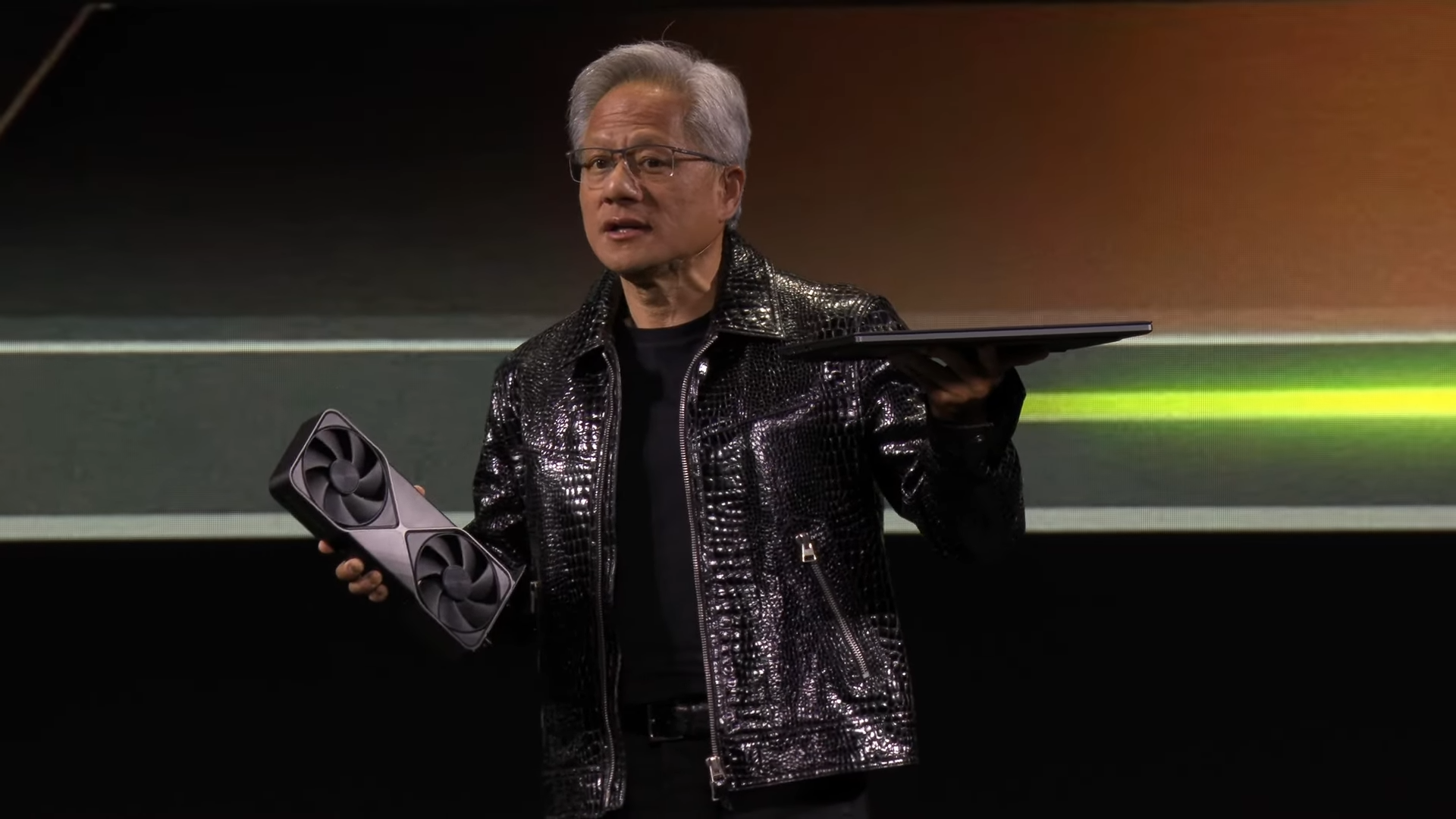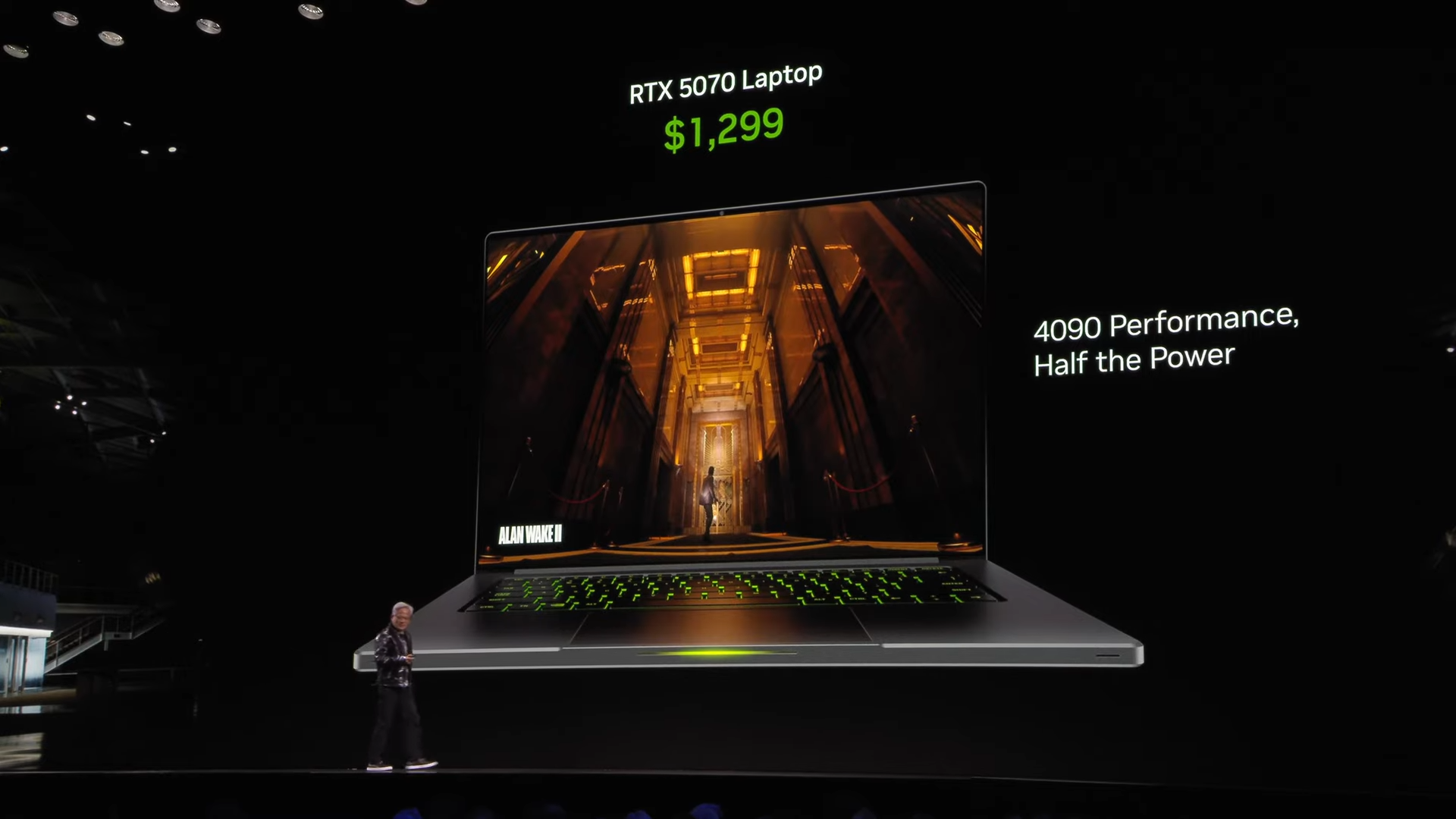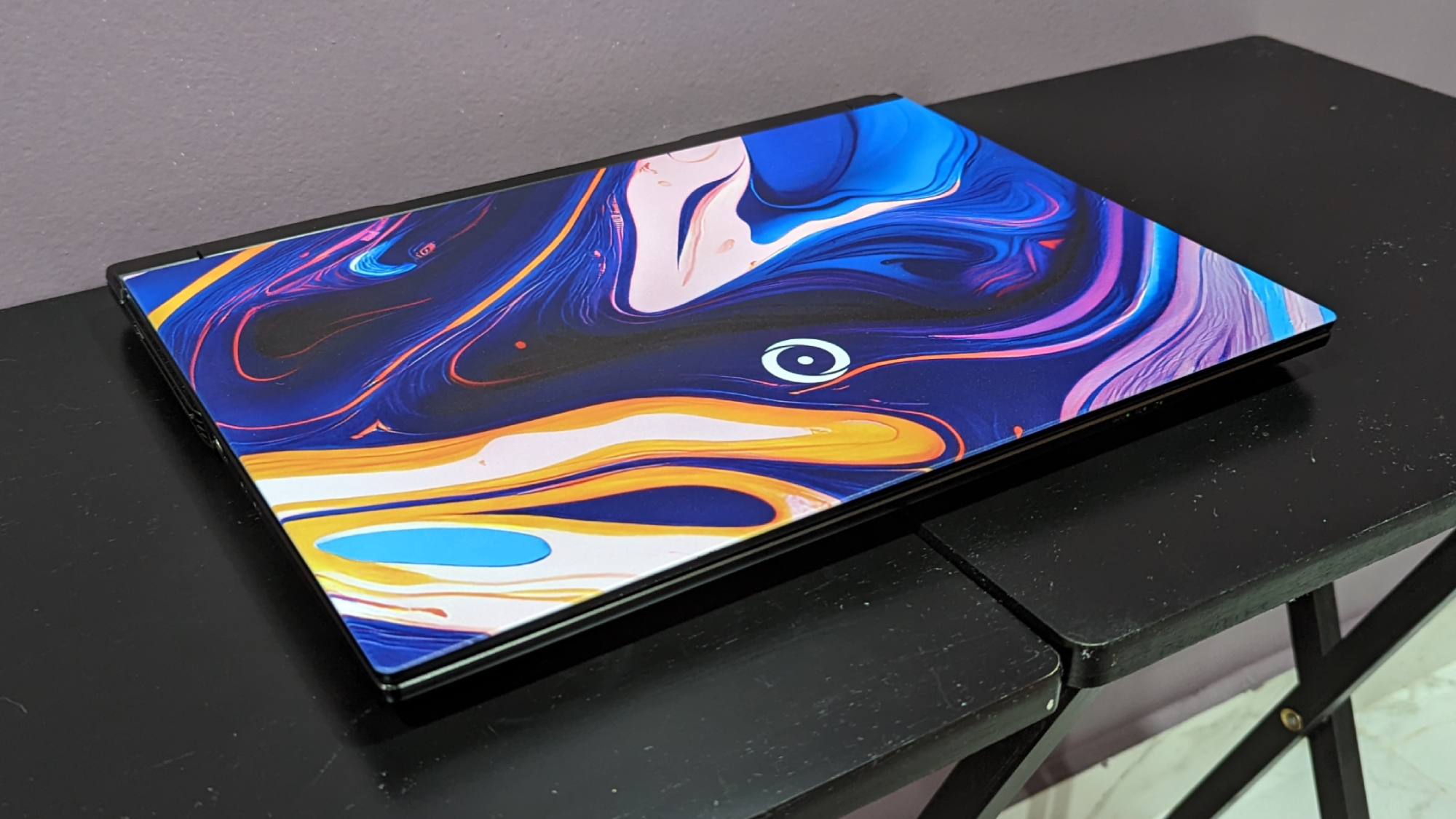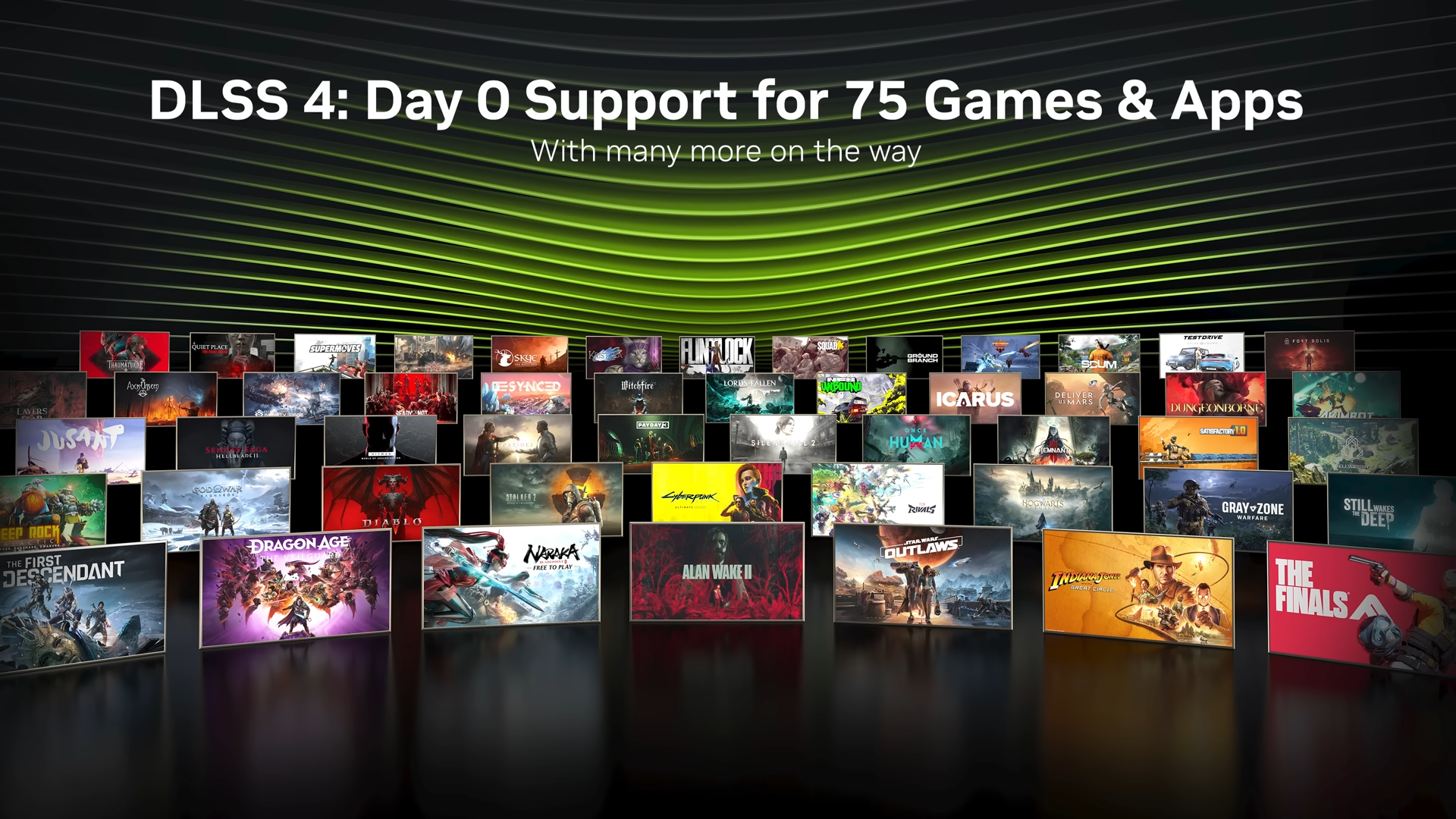
We just wrapped up CES 2025, the Consumer Electronics Show that gave us a first look at the most exciting future technology we can expect over the course of the year.
During this year's showcase, Nvidia unveiled its latest line-up of graphics cards for desktops, alongside the price ranges and expected performance of laptops that will feature their mobile versions.
Yes, the Nvidia RTX 50-series has finally been revealed, making it over two years since the first 40-series GPU was unveiled in September, 2022. Back in December, I wrote a piece about how you should wait until 2025 before buying a gaming laptop, but that largely relied on how soon Nvidia would actually get the next generation of GPUs out.
And now, after seeing official release dates and some details on what these GPUs are capable of, I stand by my claim: Wait until the 50-series before purchasing yourself a shiny, new gaming laptop.
Wait until the RTX 50-series before buying a gaming laptop
I predicted that we could see RTX 50-series laptops launching throughout May 2025, with release dates potentially coming sooner. Not my worst guess yet, as we'll see the RTX 5070 Ti, 5080 and 5090 laptops in March, while 5070 laptops will come in April.
In just a few months, we'll see what the next generation of graphical power is capable of. I claimed in December that if you're considering buying an RTX 40-series laptop now, it's your best bet to wait, as the additional power that we expect out of the RTX 50-series would more than likely be worth the wait, and the potentially extra cost.
However, Nvidia's claims about the RTX 50-series are pretty intense, to say the least. In a popular image from the company's CES 2025 press briefing, Nvidia showcases an RTX 5070 laptop that costs $1,299, with the caption "4090 performance, half the power."

If it isn't clear just how bold of a statement that is, the desktop version of the RTX 5070 will launch at $549, while the desktop version of the RTX 4090 launched at $1,599. One card is nearly three times the cost of the other, yet Nvidia is claiming their mobile variants are equivalent in power.
Even if we avoid talking about desktop GPUs and focus on laptops specifically, Nvidia claims that RTX 5070 laptops will start at $1,299. Comparatively, the latest RTX 4090 laptop we reviewed is the Origin EON16-X, and the model we tested cost $3,620.
According to Nvidia's claim, the RTX 5070 can yield identical performance to a GPU found in gaming laptops that cost nearly three times as much.
However, the boldness of these claims puts a few things into question. Nvidia's slide shows that RTX 5070 laptops will start at $1,299, but that's a generous estimate and isn't considerate towards the other aspects of a laptop.
Sure, there will likely be an RTX 5070 laptop available for $1,299, but who's to say if its display will be any good, or if it'll have a decent processor, a high amount of RAM, or a reasonable amount of storage.
And while it may not seem as important to the average gamer, a well-designed chassis is vital. You don't want your laptop to feel like a flimsy piece of junk, and we often find that the cheapest laptops typically suffer from this exact problem.
For context, back during Nvidia's CES 2023 keynote, the company claimed the RTX 4050, 4060, and 4070 laptops would be starting at $999, whereas the RTX 4080 and 4090 laptops would start at $1,999.

In reality, the first RTX 4070 laptop we reviewed was the Asus ROG Strix G16 (G614J), and the model we tested cost $1,999. Another one of the earliest RTX 4070 laptops we reviewed is the Origin EON-16S, which cost $2,386 at the time of testing.
While Nvidia is likely being honest about the $1,299 starting point for the RTX 5070 series, it's only a starting point for a reason. You're most likely still going to spend up to $2,000 or more if you want to ensure the laptop has a solid processor, plenty of RAM and storage, and a decent display.
But that beckons the question: Regardless of whether or not the estimated price point is a generous one, is there any validity to Nvidia's claim about the performance potential of RTX 5070?
Is RTX 5070 actually as powerful as RTX 4090?
Let's break down the RTX 5070 mobile version's specs: It's built with 4,608 CUDA cores, which determines how many parallel processing tasks it can perform at once. Essentially, the higher the number, the better. It also features 798 AI TOPS, which measures how many computing operations it can handle in its AI processing. Finally, it sports 8GB of GDDR7 vRAM, which is vital for smooth gameplay experiences (vRAM determines how much graphical data a GPU can store).
Comparing it directly to the RTX 4090 mobile version makes Nvidia's claims a bit questionable, as it's built with 9,728 CUDA cores and 16GB of GGDR6 vRAM. It's a bit worse at AI, with only 686 AI TOPS, but there's no avoiding a very obvious conclusion here: In terms of pure technical power, the RTX 4090 is significantly stronger than the RTX 5070.
In reality, what Nvidia is talking about all boils down to DLSS, otherwise known as Deep Learning Super Sampling. It's AI-powered upscaling and frame generation that can vastly improve visible framerates. Nvidia recently unveiled DLSS 4, which apparently can generate three additional frames for every one frame originally existing. Nvidia is calling this "DLSS Multi Frame Generation," which is exclusive to the GeForce RTX 50-series.

The Verge spoke to Lars Weinand, Senior Technical Product Manager at Nvidia, in order to get some clarification of the company's claims. “Using neural rendering and DLSS 4 we can reach performance levels [on an RTX 5070] that were only possible with an RTX 4090,” Weinand says.
So, this isn't about the RTX 5070 being able to match the RTX 4090 in power on every level but instead refers to what the company has seen while using DLSS 4. Keep in mind that not all games support DLSS 4, but it seems like the ones that do will shine on RTX 50-series GPUs.
While it's a bit less exciting to know that the RTX 5070 isn't really as powerful as an RTX 4090, it's also not remotely surprising. However, the performance differences absolutely still make it worth waiting until the 50-series launches, and if you're doubtful, wait until we get our hands on the hardware and put Nvidia's claims to the test.







